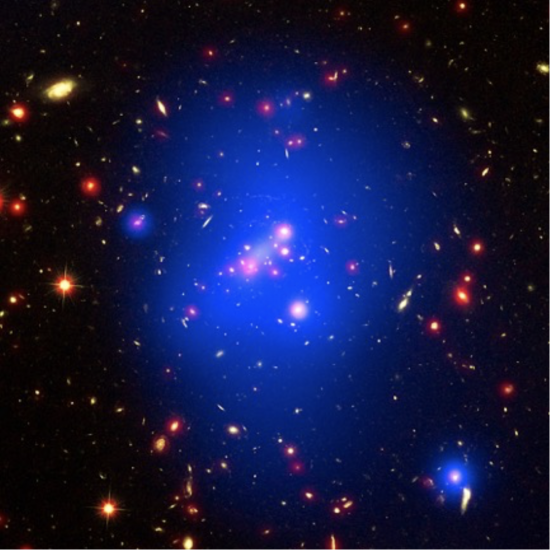
Aug 26, 2019
The Universe is composed primarily of dark matter, according to modern cosmologists. More than 95% of all that exists cannot be seen by even the highest resolution instruments.
Their premise is based on several assumptions. For example, current estimates conclude that the Universe is 13.7 billion years old. Redshift measurements from galaxy clusters seem to indicate they are located at enormous distances from Earth. Since the redshift theory conventionally associates time with speed and distance, the greater the redshift, the greater the distance and the farther back in time the clusters must be.
Consensus theories allow astronomers to propose many ideas that are built on the aforementioned assumptions, one of which is that the first stars formed soon after the Big Bang and subsequent expansion of the Universe. The first stars are no longer around. However, they are sufficiently confident in the theory that computer simulations can be written and models made.
The galaxy cluster image at the top of the page is said to represent a time almost eleven billion years ago, since redshift calculations place its central structure approximately 11 billion light-years from Earth. It is conventionally thought to be so remote in space and time that it can be placed at a period when the first stars were in their maturity. As the majority of astrophysicists maintain, that means it coalesced out of many sub-clusters when the Universe was dominated by “cold dark matter“. During that early epoch, stars must have contained high concentrations of dark matter, since theory states that dark matter densities were significantly greater than they are today.
Various science publications state that dark matter annihilation products, a new force carrier, a way for dark matter to disintegrate into electrons and positrons, and a way to account for the ionization observed in deep space created conditions necessary prop-up the theory. It is these concepts and scientific pronouncements about “dark stars” that shine from dark matter annihilation, as well as the computer simulations that are supposed to be “confirming” the environment in which those so-called dark stars can exist.
Dark and dark and dark—Electric Universe proponents wonder if there will ever be any light from the institutions that are supposed to be the pinnacle of scientific research. Physicist and Electric Universe advocate, Wal Thornhill reiterates:
“I suggest we stop wasting tens of billions of dollars searching for new particles and forces invented by mathematicians chasing fame and a Nobel Prize and spend one percent of that sum investigating the dense plasma focus. Science used to be about simplification. It is the way of the Electric Universe. It is the way out of science’s black hole.”
Stephen Smith
The Thunderbolts Picture of the Day is generously supported by the Mainwaring Archive Foundation.












